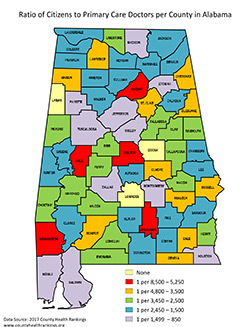
- Diabetes Home
- News and Events
- General Information
- Nutrition and Recipes
- Are You At Risk?
- Prevention
- National Diabetes Prevention Program
- Diabetes Self-Management Education and Support
- PPOD
- Marketing Materials
- Related Links
- Media
- Medical Waste Disposal
- Diabetes Today Sites
- Grant Opportunities
- Contact Us
SEE ALSO:
Cardiovascular Health
Nutrition and Physical Activity
NEED HELP?
Having trouble finding what you are looking for? Use our A to Z Index.
PPOD
Pharmacy, Podiatry, Optometry, and Dentistry
PPOD is a program from the National Diabetes Education Program at the Centers for Disease Control and Prevention (CDC), designed to engage providers from each of these disciplines so they can work together in actively identifying and treating patients with diabetes in a team-based care approach. By using this approach, providers can significantly reduce patients' risk of developing complications associated with diabetes like blindness, lower-extremely ulcers and amputation, gum disease, tooth loss, heart disease, and adverse reactions from drug interactions or poor drug therapy management.
Working Together to Manage Diabetes
Providers of Pharmacy, Podiatry, Optometry, and Dentistry (PPOD) are well-positioned to advise and educate patients about diabetes control and prevention.The PPOD Toolkit shows PPOD practitioners how they can work collaboratively with each other, as well as with other members of the health care team, such as primary health care providers, physician assistants, nurse educators, and community health workers, to promote better outcomes in people living with diabetes.
Making the Case
In 2016, there were more than 552,000 Alabamians living with diabetes, more than 14% of the population, and thousands more have pre-diabetes. Compounding the issue of high rates of diabetes in the state is that in counties where diabetes prevalence is the highest, we also find high rates of poverty, and fewer providers per capita, leaving residents with the choice to drive a long distance to see a provider or not seek treatment at all.
The map below illustrates the poverty rates in each county and also indicates the counties in the top 50% for vision loss and diabetes. There is a high concentration of counties with high poverty and high rates of vision loss and diabetes along the eastern side of the state and in the south central part of the state.
This map illustrates the ratio of Alabama citizens to primary care providers in each county. Counties with higher concentrations of residents also typically have higher numbers of providers, while more rural counties tend to have lower numbers of providers.
The following map combines the information from the two maps above highlighting the counties in the state with the highest rates of diabetes and ratios of patients to primary care physicians.
How Does it Work?
PPOD is designed to give providers the opportunity to better treat patients living with diabetes by:
- Educating people living with diabetes about the disease,
- Encouraging patients to attend a diabetes self-management education program,
- Supporting patients' efforts to practice self-management, set goals, and encourage behavior change to achieve their goals,
- Providing appropriate treatment, and
- Directing their patients to other health care professionals for treatment of conditions they do not typically treat.
From the Providers
Introduction to PPOD, Scott Harris, M.D., Acting State Health Officer, Alabama Department of Public Health
The following videos feature the perspectives of PPOD providers themselves, offering insight into what each looks for when treating patients living with diabetes.
- PPOD Through the Eyes of Our Partners, Kristi Kelly, PharmD, Emily Vance, PharmD, and Robert Russell, DPM
- Medicines Matter: The Pharmacists' Perspective, Kristi Kelly, PharmD, FCCP, BPBS, CDE, BC-ADM, and Emily Green Vance, PharmD, BCCCP
- Healthy Feet Matter: A Podiatrist's Perspective, Robert Russell, DPM
- Healthy Eyes Matter: An Optometrist's Perspective, Shilpa Register, OD, MS, PhD
- Healthy Mouths Matter: A Dentist's Perspective, Marc Vance, DMD
Additional Resources
- CDC's Vision Health Initiative
- Tracking Vision and Eye Health Data and Maps
- National Association of Chronic Disease Directors
- Prevent Blindness
Page last updated: November 14, 2025
SEE ALSO:
Cardiovascular Health
Nutrition and Physical Activity
NEED HELP?
Having trouble finding what you are looking for? Use our A to Z Index.







